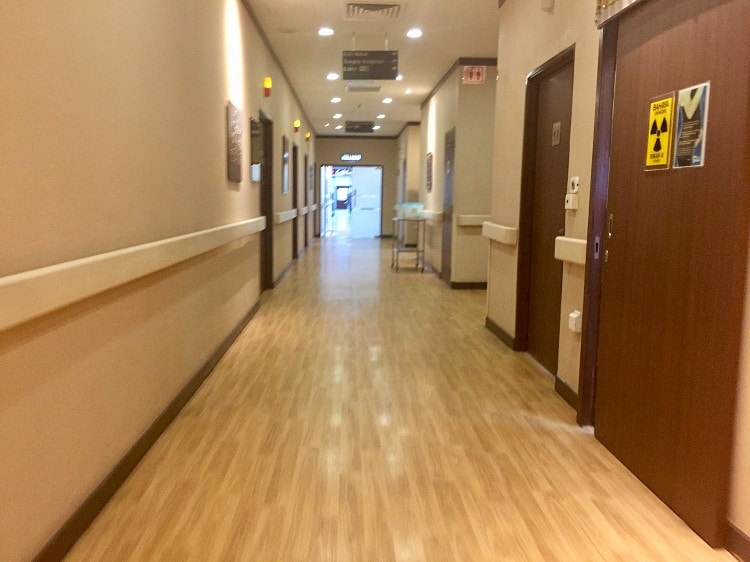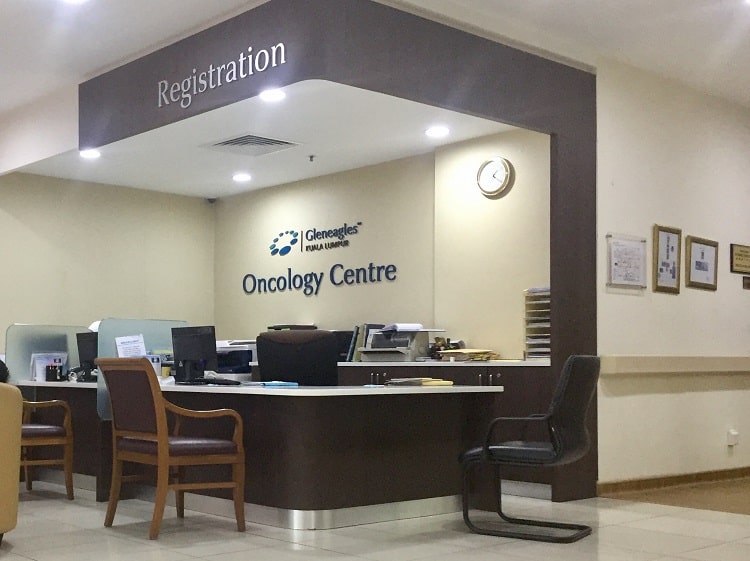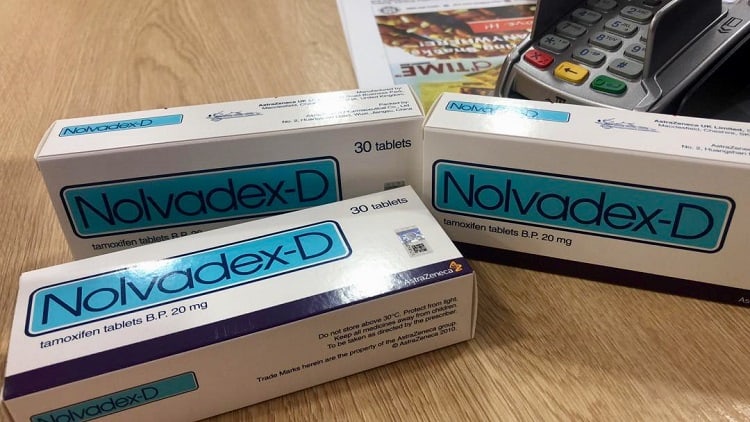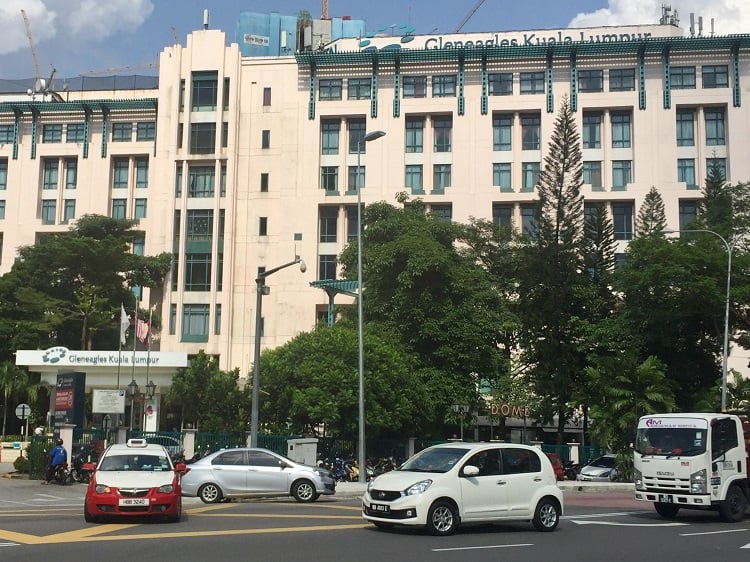Last Updated on June 3, 2023 by Ellen
Five months after my breast cancer diagnosis, I had a new experience in a new country as a medical tourist. I saw an oncologist and gynecologist for checkups in yet another foreign country.
These checkups were follow ups to the double mastectomy I had in Zagreb, Croatia, and the tamoxifen I take. The doctors I saw in Kuala Lumpur, Malaysia, say I have nothing to worry about. And so, I live to tell another tale, yet again, about health care abroad.
I’ll cover where I went, how the doctors and the facilities were, what it cost, and how I found the doctors.
Where I went & and what it was like
The doctors I saw were at Gleneagles Hospital. It is a private hospital with a good reputation, according to locals. It also has an international client service center, which I used to book the appointments online.

Someone contacted me via email within hours to ask questions to make sure I would see the right doctors. By the next day, I had secured two back-to-back appointments with the specialists I needed, on a day I wanted the following week. (I gave a few days as options.) That time frame is especially impressive when you consider I’m a foreign visitor with no regular doctor in Kuala Lumpur.
The hospital and offices were spotless and modern, and relatively new. I don’t know if public hospitals in Malaysia look this good, but one local told us public hospitals are all good, but the drawback to citizens is wait time to see the doctors.
The two doctors I saw at Gleneagles were open-minded and patient. I was seen by each office nearly right away with virtually no wait. While the hospital may get a fair bit of international travelers and workers, the doctors I saw each said they’d never met anyone like us.

I have a somewhat bizarre health history: I’m an early retired budget traveler who had a double mastectomy abroad, with a “medically interesting” case, who has kept traveling after a recovery period. My mastectomy and pathology records are in Croatian, yet I have an American passport.
The oncologist gave his opinion on my “medically interesting” case, and said he recommended exactly what I’m doing – only tamoxifen after surgery – no chemotherapy or trastazumab. (There were 10 other doctors who gave a wide-range of opinions, and that story is on my cancer blog, which is here.) Whether or not I will keep taking tamoxifen for 10 years (!) is another story for another time.
The gynecologist gave me an ultrasound in his office with a nurse present. He examined my liver, uterus, cervix, ovaries, which he said all looked normal (the liver because I’m taking tamoxifen and one side effect could be fatty liver). My annual pap test came back in the clear.
What it cost – with no insurance
The oncologist charged 270 ringgits, or about $65. I do not know how much more I was charged as a foreigner, but I don’t really care. Sixty-five dollars is not outrageous, when compared to U.S. prices.
The gynecologist was more expensive – but I had an ultrasound exam in his office and a pap test sent to a lab. The total bill there was 600 ringgits, or about $143. When compared to U.S. prices, how can I complain?

The tamoxifen was another story. The drug costs way more in Malaysia than in Europe. It seems it’s ‘imported’ and so it costs more. There is actually an ongoing problem with tamoxifen and what women are charged depending on where they get the drug.
It cost $37.50 for a month supply after we shopped around at some pharmacies near our Airbnb rental unit. But back in Greece and Croatia, tamoxifen cost $10-$12 for a month supply. Still, all in all, I cannot really complain
How I found the doctors
For some reason, it was more challenging to find the doctors this time around — not because there is a shortage in Kuala Lumpur – but because the locals in Facebook groups had no suggestions for an oncologist. Must be lower rates of cancer in Malaysia.
There are three methods I generally have used to find health care providers in the past:
- Locals and expats, either on Facebook or in real life
- Recommendations from other well-respected doctors
- U.S. Embassy lists (although the State Department never endorses any practice)
In this latest round to seek health care abroad, a friend gently nudged me to the U.S. Embassy provider list. (The State Department never endorses any doctor or facility on the list.)

If you ever find yourself traveling in Malaysia and need a good medical care facility, I would absolutely recommend Gleneagles Hospital. I had a great experience with two doctors there, but realize that experience is limited to office visits and routine exams.
And this is a good time to remind readers this is an independent blog. I get absolutely nothing in return for favorable reviews or recommendations.
What’s next
My chances of recurrence are pretty small, either 2 to 12 percent, or the more often cited 3 to 6 percent, depending on what studies you want to average out. Worry over this recurrence possibility can be debilitating if I let it become all-encompassing. I try not to. I try to stay in the moment and enjoy right here, right now. And it works… mostly.
I’ll need more tests in six months, including a blood test for the tamoxifen, so we will plan our travel to be in an area where I can find English-speaking doctors again. Returning to Kuala Lumpur and Gleneagles is always an option, for either six months from now, or another year.
Speaking of years, we are making our travel plans for 2019. If we decide to return to the U.S. for longer than 30 days, I will need to buy health insurance. Now, I’m a pre-existing condition.
Before I won the lottery for this “pre-existing” status, I supported health care for all Americans. As you might imagine, I support it even more — especially now that I’ve seen how low-priced good quality care can be in other countries with apparently less greed-driven motive for profit. But that’s yet another story, for yet another time.
Last note
Before I made a final decision on my cancer treatment, I reached out to a nonprofit called Cancer Commons. It’s a team of medical doctors and scientists who offer to take a look at cancer cases and give opinions on treatment. In the U.S., second opinions often cost patients a lot of money. This service is free, and can be done online.
My experience with Cancer Commons was, and continues to be, excellent. First, a lead scientist helped me by giving me her opinion on my treatment. Second, that same awesome woman reviewed my cancer blog, verysmallher2positive.wordpress.com, to make sure there were no medically incorrect terms. And now, I’m honored to be featured in their Patient Stories series. Read my Q&A with Cancer Commons here.
🙂

Well done Ellie. Nothing will stop you now.
I am, as always & continue to be, so very, very proud of my courageously strong & beautiful daughter! ❤️
Are you able to stock up on Tamoxifen again when you’re in a more affordable drug region? Or, are you limited in how many months’ supply you can buy?
We actually stocked up here because it likely will cost more in other SE Asian countries. Overall it’s not bad – but three times the price in Europe gave us sticker shock.